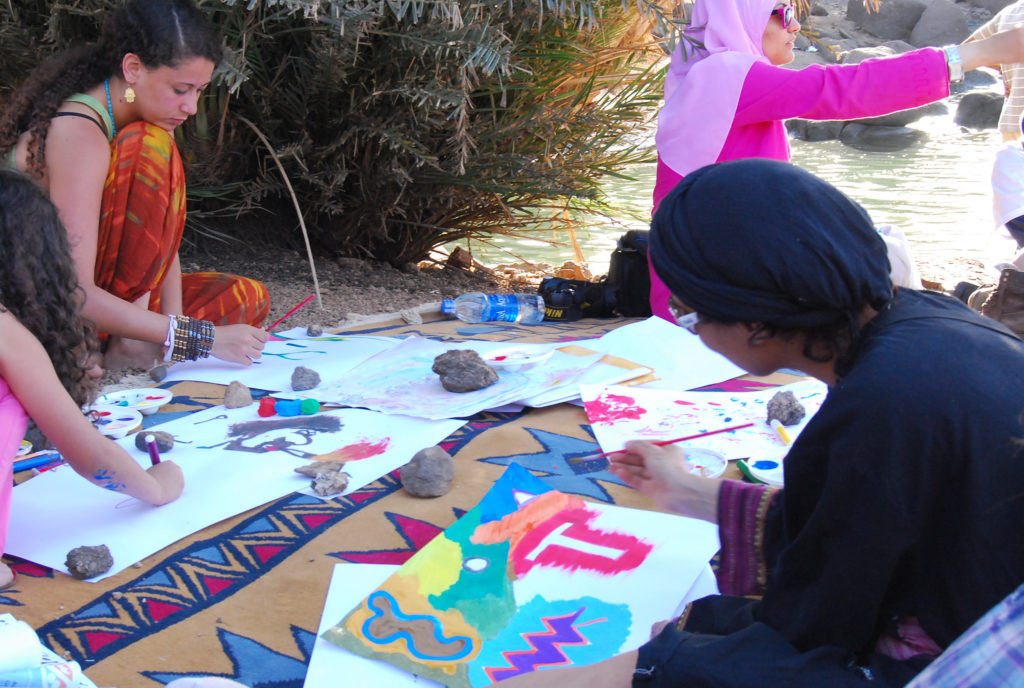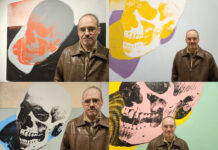Christina Blomdahl of the Sahlgrenska Academy at the University of Gothenburg in Sweden and colleagues recently published the results of an evaluation of a manual-based art therapy intervention for adults with moderate to severe depression. The findings indicate that art therapy can facilitate meaningful and therapeutic decision-making and creation for clients diagnosed with depression, but that less tangible creative tasks (those without explicit instructions or purpose) were met with mixed acceptability among the ten participants interviewed.

Art therapy remains an under-researched, under-funded and ultimately underappreciated branch of psychology. There has been a notable increase in calls for continued research in creative, non-pharmacological interventions for depression, but there is currently a paucity of research on these approaches.
Inspired by the scarcity of research supporting evidence-based practice in art therapy, Blomdahl focused her doctoral dissertation on the development of a phenomenologically inspired program that she hypothesized would facilitate healing through the process of making “oneself and the situation visible, opening up and altering understanding through inner dialogue.”
Blomdahl’s research represents a comprehensive, multiphase investigation consisting of both qualitative and quantitative analysis. While the randomized control trial (RCT) component of the study has yet to be published, Blomdahl, Wijk, Guregård, and Rusner’s article, soon to be published in The Arts in Psychotherapy (2017), reports on the qualitative elements of the thesis. This analysis includes a meaning-oriented analysis of interviews with participants, where they each reflect on their experiences with Blomdahl’s manual-based intervention.
Blomdahl acknowledges that a limitation of recruitment for the RCT component of the project was the discomfort medical professionals expressed towards asking their patients with clinically significant depression to participate in a study investigating art therapy treatment efficacy. Deep-seated doubt regarding the effectiveness of art therapy may implicitly discourage efforts to examine its effects.
Preconceived notions of art therapy as a lesser form of treatment may stifle growth within the field. There is significant potential for art therapy in support of an array of populations (psychological, somatic, environmental, and combined) but research still hasn’t caught up with the interest that art therapy attracts. Blomdahl and colleagues’ encompassing investigation may suggest that a paradigm shift in-the-works.
“Art therapy that is based on phenomenology focuses on the way in which patients perceive the world, their lives, and themselves,” the researchers explain. “The therapeutic goals in phenomenological art therapy have been described as: enhancement of self-awareness; viewing and evaluating current lives in new ways; promoting an increased understanding about one’s life; acceptance of one’s limitations and strengths; and to prioritize these based on self-knowledge.”
The emphasis on patient experience in Blomdahl’s phenomenological treatment manual, in combination with attention to the non-verbal components of the therapeutic process, separate the philosophical underpinnings of the current study from those of other comparable studies.
The authors highlight that depression is the most targeted diagnosis in art therapy practice, but the mechanics of procedures applied in art therapy for this purpose have not been carefully explored. It has been observed, however, that art therapy in-practice usually is stylistically determined by the professional guiding the program, and may represent a number of theoretical approaches.
Phenomenological Art Therapy for patients with depression (PATd), developed by Blomdahl, was designed to foster self-understanding through self-expression. In phase one of the study, the researchers used pre-post-measures to compare the PATd to mainstream treatment strategies for moderate to severe depression. In phase two, Blomdahl and her team conduct a thorough analysis of participants’ interpretations of their experiences in treatment.
The researchers used a qualitative technique called Reflective Lifeworld analysis to analyze interviews with the ten individuals from a larger sample of participants involved in Blomdahl’s RCT. The Reflective Lifeworld technique occurs in three stages, including the whole, the parts, and the new whole. More specifically, unstructured interviews regarding participants’ perceptions of their PATd experiences were first evaluated for overarching themes, unique details were examined, and then big picture ideas were considered across the interviews.
“Manual-based Phenomenological Art Therapy for people with moderate to severe depression means meeting oneself in an inner dialogue between the evident and the unaware. Art-making and the ensuing narrating makes inner life visible, and can open up and alter the understanding of oneself and one’s situation.”
The interviews revealed participants’ perceptions of the importance of having the autonomy to select materials, the creative process, and interactions with a finished piece in negotiating and making sense of inner dialogue. Beyond the pleasure of creation in itself, the importance of making deliberate choices and meaning-making present in PATd were identified by participants.
The researchers note that multiple participants interviewed were thrown off by ambiguous creative tasks, while those with more accessible instructions were more acceptable to participants. Flexibility in material and process is desirable, but direction is also valued.
The report concludes with a synthesis of the findings, outlining six compelling implications:
“[1] our results are based on a very large sample of students from three different universities.
[2] the decline was evident both for overall narcissism levels and for the specific facets of leadership, vanity, and entitlement.
[3] the decline persisted after controlling for measurement non-invariance.
[4] the decline was continuous over time, indicating that there was no rise in narcissism before purported historical factors such as the recession of 2008.
[5] the decline held for major ethnic groups and no ethnic group showed the overall increase predicted by proponents of the narcissism epidemic.
[6] the findings were consistent across men and women.”
Beyond the results highlighted above, considerations for differences between responses to specific items in the tool are overviewed in the discussion portion of the publication. Additionally, “fine-grained year-by-year analyses” are reported.
The interviews summarized in this review represent only one portion of Blomdahl’s multiphase thesis. Together with the yet unpublished pieces of the project, this project sheds light on the tremendous possibilities for art therapy in the treatment of depression.
****
Blomdahl, C., Wijk, H., Guregård, S., & Rusner, M. (2017). Meeting oneself in inner dialogue: Manual-based Phenomenological Art Therapy as experienced by patients diagnosed with moderate to severe depression, a qualitative study. The Arts in Psychotherapy. doi:10.1016/j.aip.2017.08.006 (Abstract)














